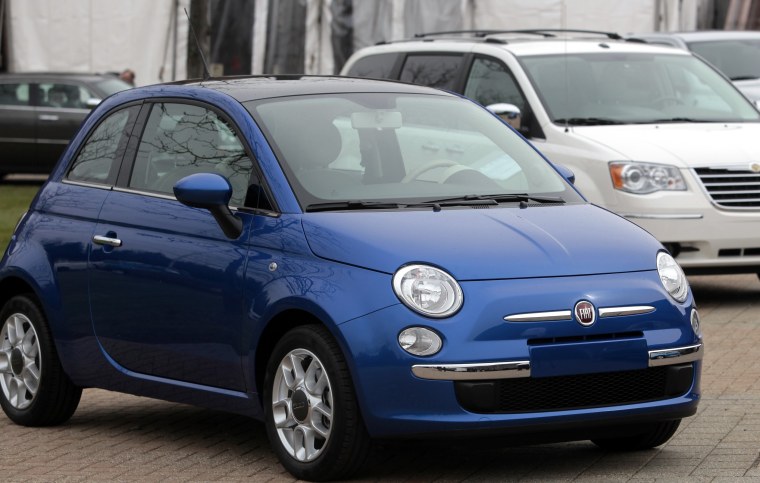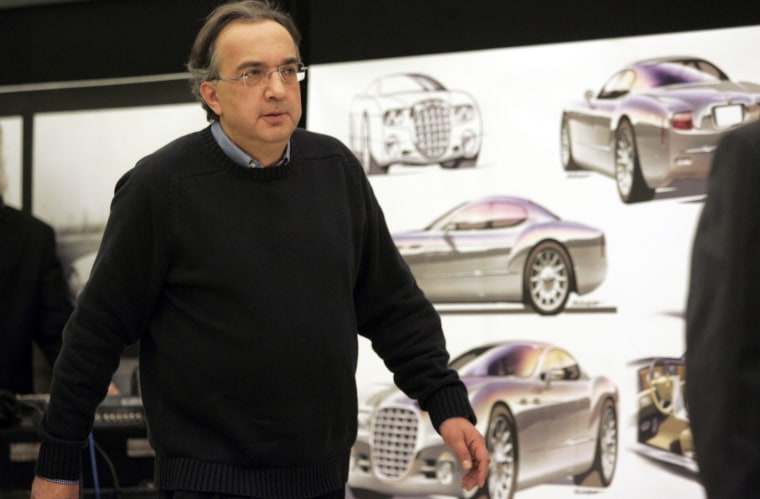The auto industry loves to find miracle workers. Thirty years ago, Lee Iacocca worked his magic by convincing Congress to deliver a package of loan guarantees that kept Chrysler from going broke. A decade ago, Carlos Ghosn was recruited to save struggling Nissan. Now Sergio Marchionne is being asked to pull together a miracle for the second time.
Nearly six years ago, he was tapped by the floundering Fiat, turning it into one of Europe’s most successful automakers. Now he’s got an even tougher challenge ahead of him as the new CEO of Chrysler Corp.
Chrysler is the corporate equivalent of a manic depressive. Since being founded by the eponymous Walter P. Chrysler in 1925 it has had numerous runs of rich profits, but it’s also come close to catastrophe many times. Early this year, its final chapter might have been written had it not been for a multibillion-dollar bailout cautiously approved by the Obama administration.
The government loans carried some significant caveats, among them that the “new” Chrysler would no longer be an independent manufacturer but would rather fall under the control of Fiat. The Italian automaker started out with a 20 percent stake that could grow to 35 percent if meets a series of goals.
On Wednesday, Marchionne and a largely new senior management team outlined how they’d not only meet those goals but pull off what could become one of the biggest turnaround stories in automotive history.
“Nobody’s promising a miracle here,” Marchionne cautioned during a briefing that took more than eight hours to unfold. But he also stressed that his plan was “comprehensive, serious and … ambitious.”

Skeptics might have reason to gape when first hearing the proposed results. Insisting Chrysler already has slowed its cash burn to a flicker, the Italian-born, Canadian-educated executive said he expects the maker to post an operating profit next year and go into the black on a net level in 2011. More spectacular, if he can pull it off, Marchionne believes Chrysler will generate $14 billion in earnings by the time a new five-year plan is needed, in 2014.
Considering the uncertainty of the economy and continued weakness of the U.S. auto market — which has been struggling through its worst recession in decades — that might seem hard to swallow. But the ever-cautious, always opinionated Mike Jackson, CEO of the country’s largest dealership chain, AutoNation, calls himself “a believer” and sees “a big margin for error built into the plan.”
Indeed, a closer look shows that Marchionne and his planning team have based most of their expectations on U.S. sales projections well below industry consensus.
Of course, a turnaround is more than just a numbers game. Chrysler has some serious problems that need to be fixed — so many, in fact, that it might overwhelm an executive just thinking about them.
The previous CEO, former Home Depot boss Bob Nardelli, lasted less than two years in the post after being installed by the company’s former owners, Cerberus Capital Management. Nardelli stepped down this year after Chrysler completed its bankruptcy reorganization and emerged under control of Fiat and the U.S. government.
Take quality, a nagging challenge and one so serious that Chrysler’s three brands were among the four bottom feeders in the most recent study of vehicle reliability by the influential Consumer Reports magazine.
During a presentation Wednesday, Doug Betts, who joined Chrysler as quality chief two years ago, said he discovered a company so dysfunctional it would take at least two months, once a quality problem was revealed, just to begin the process of trying to figure out its cause. “We can’t expect to change our situation unless we change the way we work,” he said.
Marchionne plans to address that by introducing to Chrysler the Fiat manufacturing system, a key to the Italian automaker’s turnaround. But he’ll also introduce a lot of Fiat products to the Chrysler lineup, notably including the pint-sized, super-fuel-efficient Fiat 500.
By 2014, fully 50 percent of the products sold by the U.S. automaker will be based on products — or at least on the underlying platforms — developed by Fiat. And to meet a goal of increasing fuel efficiency 25 percent during those five years, Chrysler will adopt Fiat diesels and downsized gasoline engines accounting for 40 percent of its mix.
It’s not a one-way path, however. Chrysler definitely needs smaller cars, as well as those fuel-stingy powertrains to finally get a firm footing in markets like Europe, where its big American cars and trucks appeal to nothing more than low-volume niches. But Fiat can use some of Chrysler’s bigger cars and trucks in a few of the markets it would like to tap, as well.
Nonetheless, with its broader range, the plan projects Chrysler will be able to increase its sales outside North America from 182,000 units this year to 500,000 by 2014. That would help the company grow globally from 1.3 million units to 2.8 million.
American taxpayers should hope the plan works. A report from the federal Government Accountability Office this week cautioned that General Motors and Chrysler will never fully reimburse the Treasury for the more than $80 billion in bailout money they have received.
Not so, contended Marchionne, at least as far as Chrysler is concerned. He expects to pay the company's loans back in full and within the five-year window.
If that wouldn’t qualify as a miracle, it’s hard to imagine what will. True, magic is really just a sleight of hand, but Marchionne won’t be able to save Chrysler with trickery.
That didn’t work in the past, at least not for long. The automaker has only one shot at pulling this rabbit out of its hat, but the plan laid out by Marchionne certainly seems to be the best shot it has.
